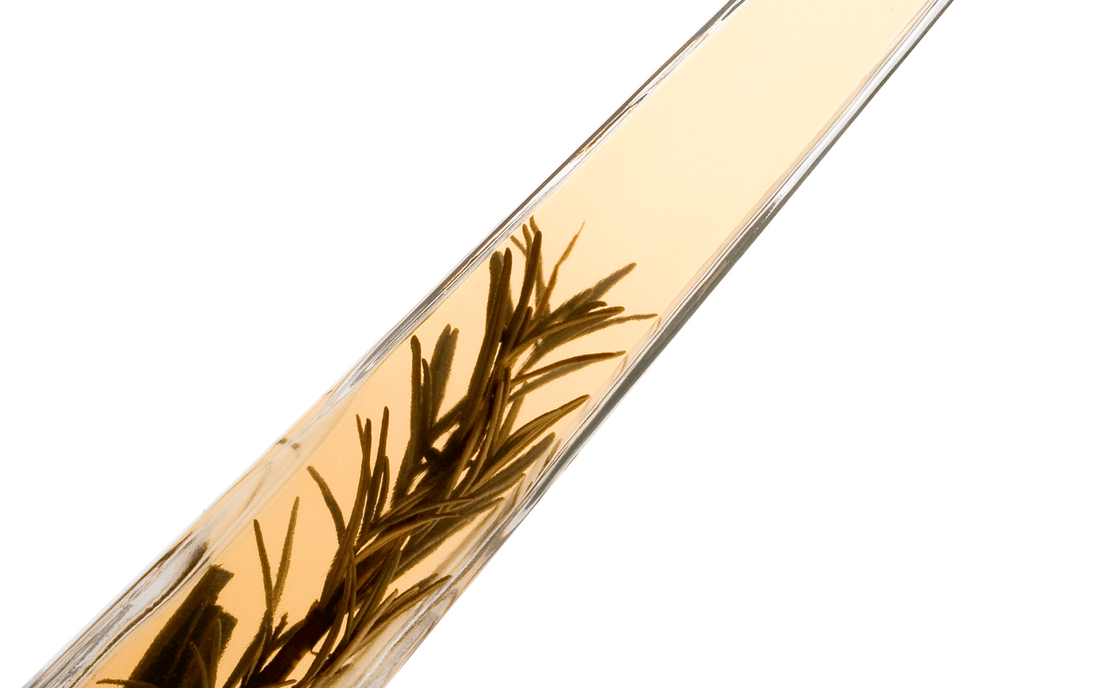
How To Make Vinegar Botanical Extracts
Juliette van der MeerThe third installment of the Botanical Extracts Series focuses on a slightly more unusual solvent: vinegar.
Why use Vinegar as an extract base?
Vinegar is a self-preserving solvent like alcohol, but obviously without any alcohol content, making it useful in a variety of applications. It is mildly acidic and therefore also a good environment to infuse herbal properties into.
How do you use Vinegar Extracts?
Vinegar based botanical extracts are less widely known than water or oil infusions but they have plenty of applications. They can be used in foods, cosmetics, as well as medicinally.
Probably the most well known use of botanical vinegars is as a condiment over salads, marinades and other dishes; a flavoured vinegar brings another dimension to your food.
Vinegar Extracts as Supplements
Vinegars can also be taken orally as tinctures. Apple cider vinegar is a popular supplement but imagine boosting it with the power of herbs too! Vinegar tinctures are alcohol free so are suitable for all.
Vinegar Extracts in Cosmetics
In cosmetics, vinegar botanical extracts can yield some interesting results and lend certain properties to a formula. Minerals and trace elements transfer particularly well into vinegar so consider infusing botanicals that are rich in minerals. This is an exciting way of naturally incorporating minerals into your formulas - our hair and skin need their minerals so by using a vinegar extract in shampoos and creams you can help them get it.
For example, silica is great for strengthening hair and is found in the herb horsetail, so a horsetail vinegar infusion might be fantastic in a shampoo formula.
Botanicals for Vinegar Extracts:
Here is a small list of botanicals that are useful in vinegar extracts. But feel free to use any herbs.
For cosmetics and hair care:
- Horsetail - silica
- Nettle - silica and magnesium
- Parsley - zinc, magnesium
- Oat straw - iron, phosphorus, selenium, magnesium
- Dandelion - calcium, iron, potassium, magnesium
- Raspberry leaf - potassium, calcium, iron
- Chickweed - iron, copper, calcium, sodium, manganese, phosphorus, zinc, magnesium and silica
- Moringa - magnesium, calcium, potassium & iron
For condiments:
Vinegar is a self preserving system so you won't need to add additional preservative to give your extract a shelf life. A vinegar extract will last about a year when stored correctly.
How Much Botanical To Use
- For use in the kitchen: 3-4 small handfuls of herbs to 500ml vinegar should be enough. Or 1 part herbs to 15 parts vinegar.
- For cosmetic/medicinal use you can go a bit stronger: 1 part herbs to 7 parts vinegar.
You don't need to worry about being precise with the ratios here. Feel your way around with your extract and see what works. You may find you want to have a higher herb concentration or a lower one depending on your use for it.
How To Make Vinegar Extracts For A Cosmetic Formula
Ingredients:
- Dried herb(s) of choice
- A sterilised beaker
- Apple cider vinegar or other suitable vinegar, preferably food grade
- Jar
- Add your botanical(s) to the beaker or jar.
- Pour over the vinegar.
- Cover and leave for 2-4 weeks to infuse, stirring daily.
- Strain well and bottle.
How To Use A Vinegar In Cosmetic Formulas
Vinegar is an acid with a pH of around 2-3, with plain white vinegar coming in at 2.5. While one would normally adjust the pH of a formula with citric acid solution, you could use vinegar instead. Using a vinegar extract will bring in some added X factor to your hair care formula - apple cider vinegar is a popular hair rinse so incorporating it into a shampoo formula is a bonus.
The same can apply in skincare formulas.




















